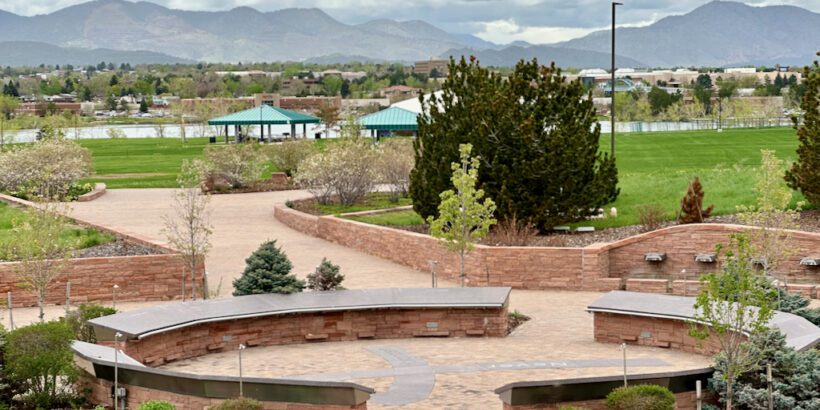The Columbine massacre remains etched in our collective memory due to its unprecedented nature and the unfathomable evil that unfolded.
But if you are ever in the Denver area, there is a memorial offering an opportunity to honor the victims, engage in introspection, and commemorate this tragedy in a way that rekindles optimism and compassion.
Below, I’ll share with you how you can visit this memorial and what to expect.
Table of Contents
What is the Columbine Memorial?
The Columbine Memorial honors and remembers the victims of the tragic school shooting that occurred at Columbine High School on April 20, 1999. The memorial was officially dedicated on September 21, 2007, and today it serves as a place of reflection, healing, and remembrance for those affected by the devastating event.
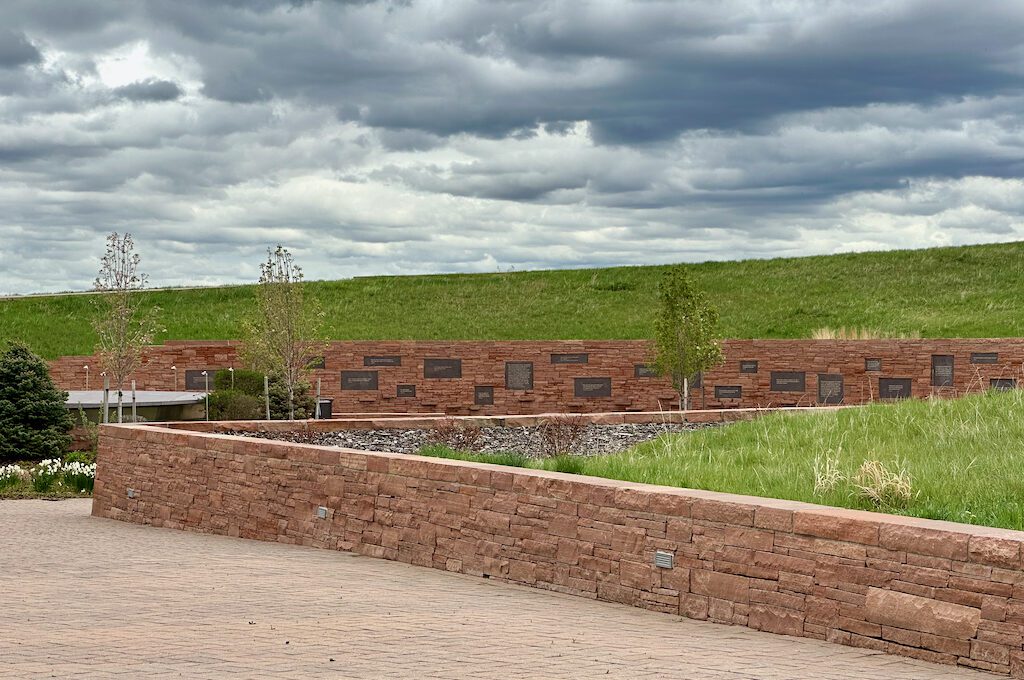
Where is the Columbine Memorial?
The Columbine Memorial is located in Robert F. Clement Park in Littleton, Colorado.
The park is full of open spaces, baseball fields, and other facilities like a skate park but from the main parking lots you should be able to find signs pointing you towards the memorial which is located along a paved path.
Be aware that on the memorial grounds, no pets are allowed and there is an expectation that you will act respectfully by not doing things like playing music, talking on the phone, etc.
Visiting the Columbine Memorial
As you enter the sacred grounds of the memorial, you’ll notice an inner and an outer ring.
The outer ring is known as the “Wall of Healing” and is dedicated to those “who were injured at Columbine High School and to all who were touched by the tragic events of April 20, 1999.”
Engraved stones with powerful quotes from students, parents, community members and others express a range of emotions and sentiments connected to the tragedy. As you would expect, many of these are quite moving.
Together, the engravings express a collective sense of determination, resilience, faith, and remembrance, and give you an idea of how these events directly impacted the lives of many. For some messages, there are probably hundreds or thousands of people who were impacted the same way.
If it’s your first time visiting the memorial, consider walking along the Wall of Healing first. It sort of prepares you emotionally for what’s to come.
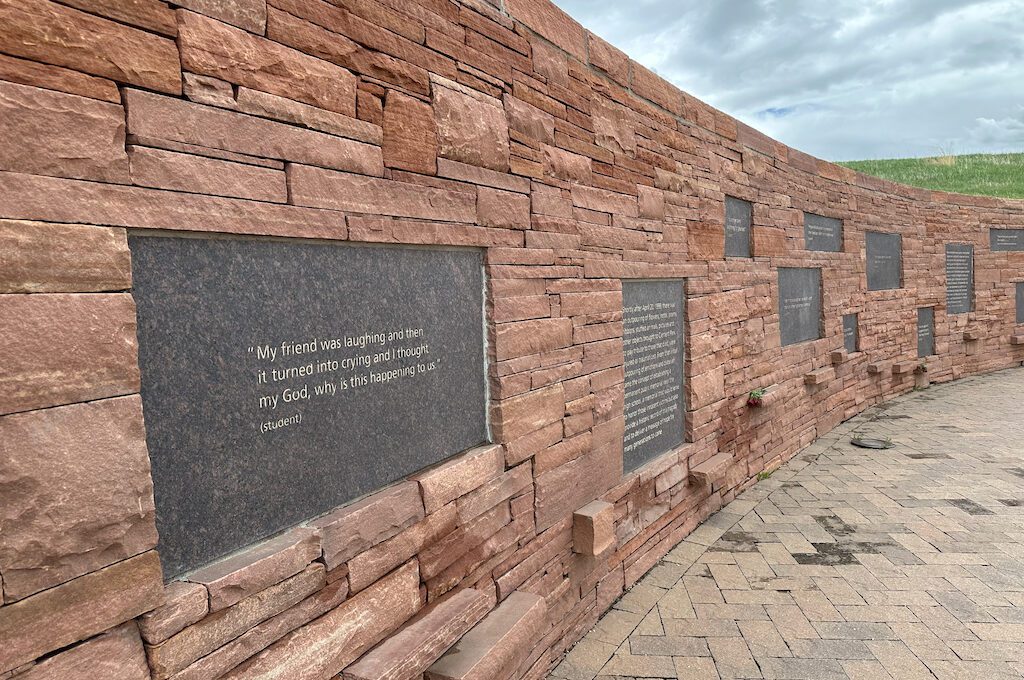
In the middle of the memorial you’ll find the inner circle, known as the “Ring of Remembrance” where the 13 people who lost their life are remembered. The victims’ families were requested to offer some type of heartfelt expression that would honor their loved one and these precious words were engraved in stone.
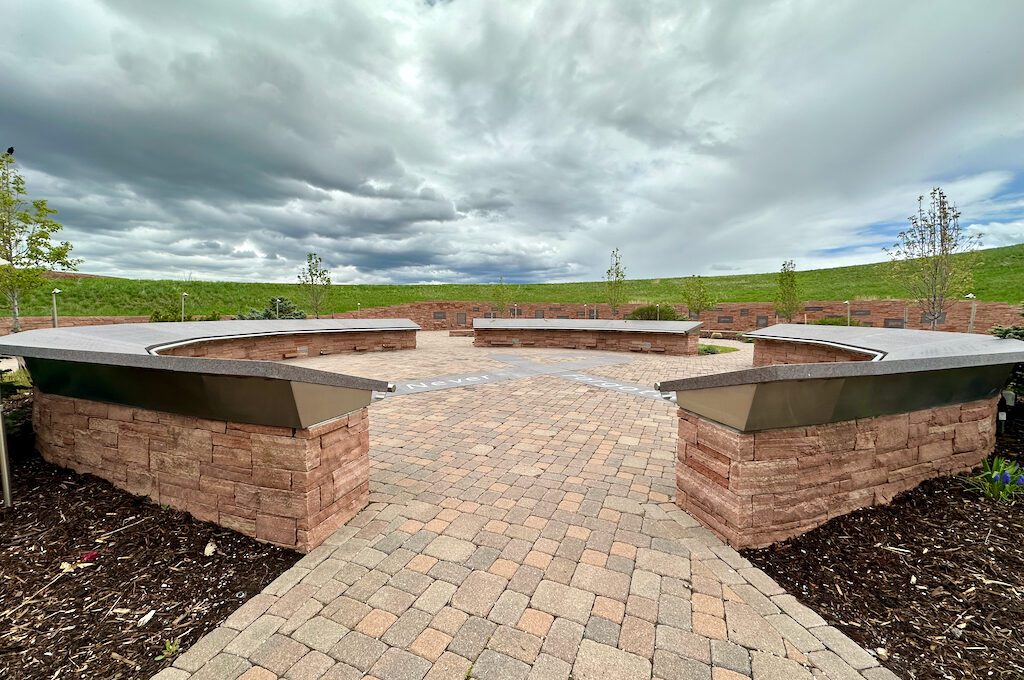
The inscriptions are incredibly moving and you’ll have a heavy heart as you move from one to the next. You can sense both the pride and the pain from the parents who were forced to deal with the void left in their hearts. As you quietly move along, allow yourself to be touched by the magnitude of their loss and examples of their strength.
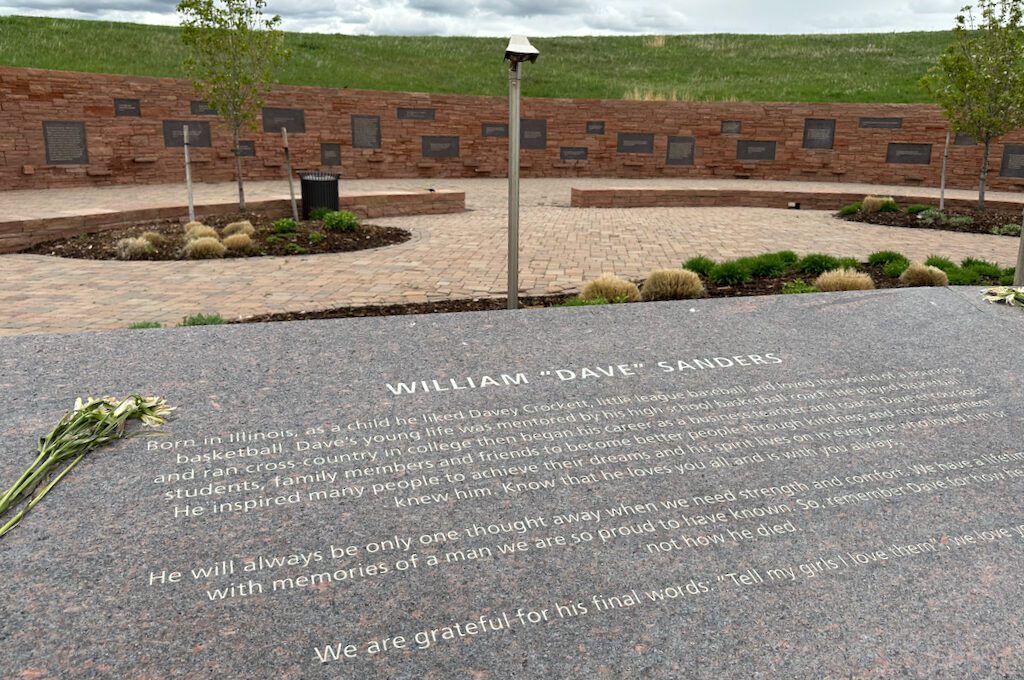
The victims remembered here include:
- Cassie Bernall, 17
- Steven Curnow, 14
- Corey DePooter, 17
- Kelly Fleming, 16
- Matthew Kechter, 16
- Daniel Mauser, 15
- Daniel Rohrbough, 15
- Rachel Scott, 17
- Isaiah Shoels, 18
- John Tomlin, 16
- Lauren Townsend, 18
- Kyle Velasquez, 16
- Dave Sanders, 47 (teacher)
In the middle of the ring of remembrance, a large “Never Forgotten” ribbon designed by Kyle Velasquez’s parents, Al and Phyllis, stands out.
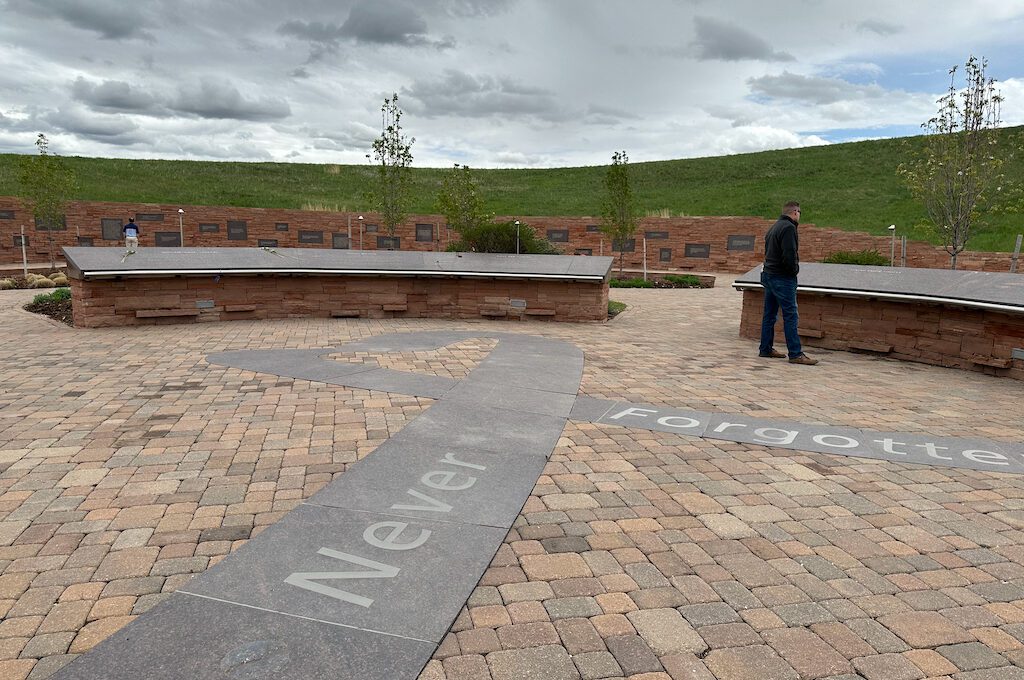
There’s a path that wraps around the Memorial and takes you atop of a hill that overlooks the memorial.
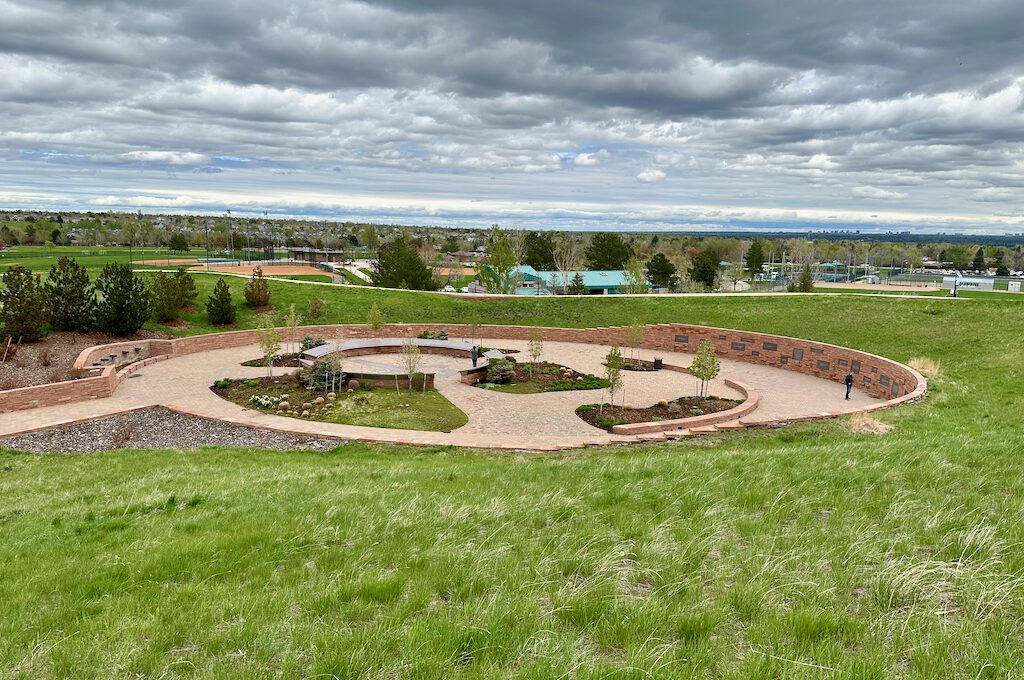
As you make your way to the top of the overlook, with Columbine High School visible in the background, it’s really hard to not think about how these events shaped our modern society.
Since 1999, there have been many school shootings.
But the shooting at Columbine stands out for a few reasons.
For one, it was one of the deadliest school shootings and the first one that I remember making major news. As a mere fifth-grader, I sat mesmerized, eyes glued to the television screen, as the haunting images on the news replayed before me—students, their hands raised, forced to exit the high school in single-file lines.
It was a seismic event and one of the first times I remember ever being truly stunned by what I was watching unfold — something that I think that a lot of people of my generation felt. It was almost like 9/11 in the sense that you remembered exactly where you were when you heard the news.
Another reason this tragic event remains seared in our collective consciousness is the unfathomable nature of the evil that unfolded. It defies comprehension to think that two high school students could conspire together to execute such an unthinkable act.
As one plaque stated:
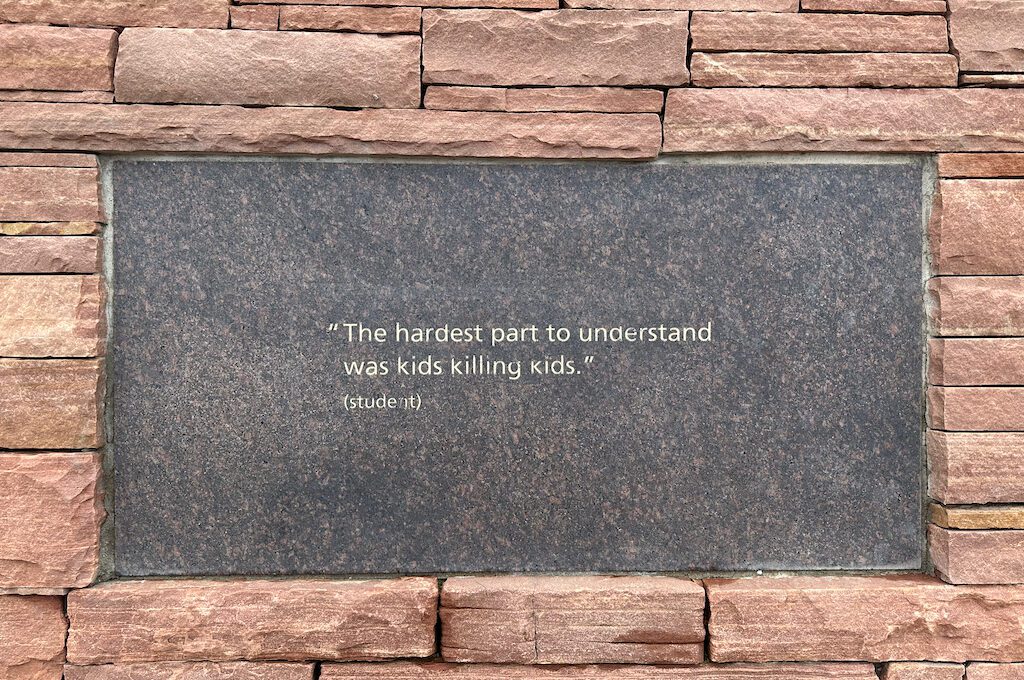
It’s truly beyond belief and if you ever read any excerpts from the journals of the shooters (which I don’t advise), you’ll realize the twisted mindset that drove them.
Walking away from the memorial, a profound wave of empathy washed over me for the victims’ families and I found myself contemplating why these things have continued to happen over the years.
There were school shootings before Columbine dating back to the 1960s and 70s but it’s always felt like the Columbine shooting opened up a Pandora’s box of a particular type of youthful evil.
Undoubtedly, lots of factors contribute to these harrowing events, including mental illness, accessibility to weapons, exposure to violence, and childhood trauma, among many others.
The root cause of these events has of course fueled debates that have become intensely politicized.
But politics aside, I think one thing that everyone can agree on is that we all should remain as vigilant as possible.
Stay observant, be attentive to your surroundings, and never hesitate to voice any concerns or suspicions. Equally important is to take all reported suspicions seriously.
Take into account that an analysis backed by the Department of Justice, which examined 51 school shooting incidents that were prevented, found that peers were most likely to discover and eventually report plans of an attack, making them crucial to shutting them down.
In fact, in one study the Secret Service found at least one other person knew the shooter was thinking about a possible attack 81 percent of the time.
In the case of Columbine, there were unfortunately lots of red flags and some missed opportunities to potentially thwart this tragedy, including warnings that were not thoroughly investigated even though they had been reported to police.
These type of lapses have led to organizations like Safe2Tell, which allow students to report threats anonymously in order to prevent harm to others. And of course, many other efforts around the nation have been put forth since 1999, from threat assessment teams to SEL programs.
Still, with all of the school shootings that continue taking place, it can feel like progress isn’t happening, at least not quick enough. You almost get numb to hearing about another one of these incidents on the news, which is a sharp contrast to the initial shock many felt upon first seeing the footage of Columbine in 1999.
But that’s why these type of memorials are so important to visit. They serve as powerful reminders of the human lives lost, the impact on communities, and the importance of valuing human life. And hopefully, they help to reignite our commitment to preventing further violence.
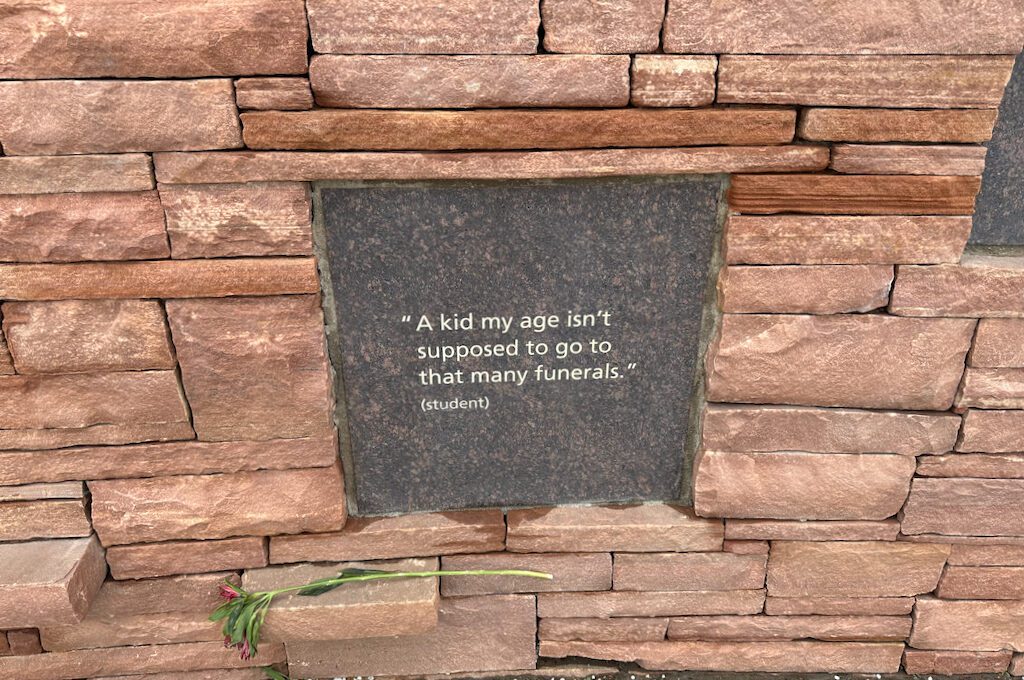
Donating to the memorial
If you feel a particular connection to the events consider donating to the Columbine Memorial Foundation, a non-profit organization formed in March 2009 to maintain, repair, and provide improvements to the Columbine Memorial.
They are doing an excellent job at maintaining the memorial and any donation would only continue to further the mission. While the memorial is free to visit, the cost to maintain and provide improvements is estimated at $10,000 to $15,000/yr.
Final word
The Columbine Memorial in Littleton stands as a moving and solemn tribute to the victims of the tragic school shooting that occurred at Columbine High School on April 20, 1999. The memorial’s “Wall of Healing” and “Ring of Remembrance” reminds us of the ongoing pursuit for a safer world and I’d recommend anybody who is in the area to pay the memorial a visit.
Daniel Gillaspia is the Founder of UponArriving.com and the credit card app, WalletFlo. He is a former attorney turned travel expert covering destinations along with TSA, airline, and hotel policies. Since 2014, his content has been featured in publications such as National Geographic, Smithsonian Magazine, and CNBC. Read my bio.

